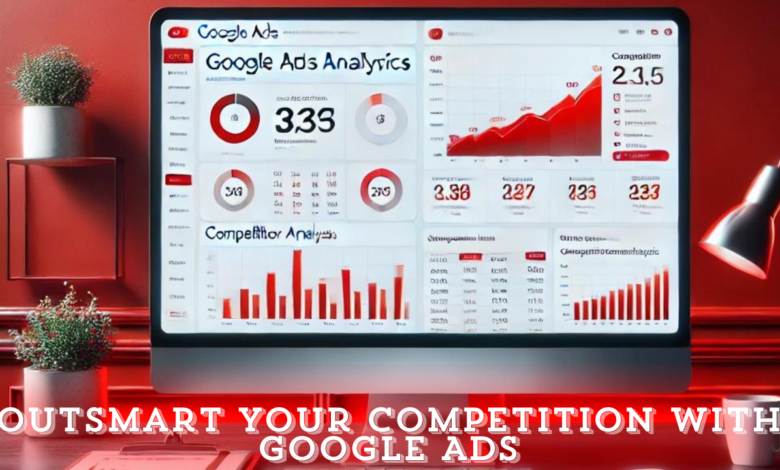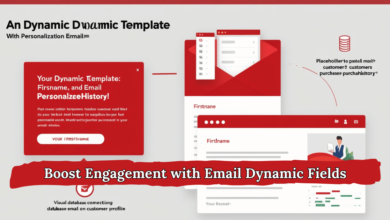
In the highly competitive world of digital marketing, Google Ads Competitor Analysis is a crucial tool for businesses looking to outperform their rivals. By understanding the strategies and tactics employed by competitors, you can refine your own campaigns to drive better results. This article will walk you through the essential steps and strategies for conducting effective Google Ads Competitor Analysis.
Why Google Ads Competitor Analysis is Important
Understanding Market Positioning
Conducting a Google Ads Competitor Analysis helps you to understand where your business stands in the market. By analyzing your competitors’ ad strategies, you can identify gaps in your own campaigns and discover new opportunities to capture market share.
Identifying Strengths and Weaknesses
A thorough Google Ads Competitor Analysis enables you to pinpoint the strengths and weaknesses of both your and your competitors’ campaigns. This information can be leveraged to enhance your ad performance, optimize your budget, and improve your return on investment (ROI).
Staying Ahead of the Curve
The digital marketing landscape is constantly evolving. Regular Google Ads Competitor Analysis ensures that you stay updated with industry trends and competitor tactics, allowing you to adapt your strategies to stay ahead.
Steps to Conduct an Effective Google Ads Competitor Analysis
Step 1: Identify Your Competitors
The first step in Google Ads Competitor Analysis is to identify who your competitors are. This includes both direct competitors (businesses offering similar products or services) and indirect competitors (businesses targeting a similar audience with different products or services).
Tools to Identify Competitors
- Google Search: Perform a Google search using your primary keywords to see which businesses are running ads.
- SEMrush: Utilize SEMrush’s Competitor Analysis tool to discover which companies are bidding on similar keywords.
- SpyFu: SpyFu provides a detailed overview of your competitors’ ad history and strategies.
Step 2: Analyze Competitor Ad Copy and Messaging
Once you’ve identified your competitors, analyze their ad copy and messaging. Pay attention to the tone, language, and calls-to-action (CTAs) they use. This will help you understand what resonates with your target audience and how you can differentiate your messaging.
Key Elements to Analyze
- Headlines: Are they using attention-grabbing headlines?
- Description: How detailed is their ad description? Does it highlight unique selling points?
- CTAs: What actions are they encouraging users to take?
Step 3: Examine Competitor Keywords
Keyword analysis is a critical component of Google Ads Competitor Analysis. By examining the keywords your competitors are bidding on, you can identify high-performing keywords to target and low-performing ones to avoid.
Tools for Keyword Analysis
- Google Keyword Planner: Use this tool to see what keywords your competitors are bidding on.
- Ahrefs: Ahrefs provides comprehensive data on competitor keywords and their performance.
- Moz: Moz’s Keyword Explorer tool helps you discover competitor keywords and analyze their potential.
Step 4: Evaluate Competitor Ad Extensions
Ad extensions play a vital role in the success of Google Ads campaigns. During your Google Ads Competitor Analysis, evaluate the types of ad extensions your competitors are using, such as sitelinks, callouts, or location extensions.
Why Ad Extensions Matter
- Increased Visibility: Ad extensions make your ad more prominent, increasing click-through rates (CTR).
- Improved User Experience: They provide additional information that helps users make informed decisions.
Step 5: Monitor Competitor Bidding Strategies
Understanding your competitors’ bidding strategies is essential for optimizing your own campaigns. Are they using automated bidding, manual bidding, or a mix of both? Knowing this can help you fine-tune your bids to stay competitive.
Bidding Strategies to Consider
- Maximize Clicks: Aims to get as many clicks as possible within your budget.
- Target CPA: Focuses on conversions at a specified cost-per-acquisition.
- Enhanced CPC: Adjusts manual bids for clicks that seem more likely to convert.
Step 6: Review Competitor Landing Pages
The success of a Google Ads campaign doesn’t just depend on the ad itself but also on the landing page users are directed to. As part of your Google Ads Competitor Analysis, review the landing pages of your competitors to see how they are structured and what kind of content they provide.
Key Aspects to Evaluate
- Design and Layout: Is the landing page visually appealing and easy to navigate?
- Content: Does the content align with the ad? Is it compelling and informative?
- Loading Speed: How fast does the landing page load? Slow pages can hurt conversion rates.
Step 7: Track Competitor Ad Performance Over Time
Tracking your competitors’ ad performance over time is crucial to understanding their strategy’s effectiveness. Tools like SEMrush, SpyFu, and Ahrefs can help you monitor your competitors’ ad campaigns, including changes in their ad spend, ad positions, and keyword performance.
Benefits of Long-Term Tracking
- Identify Seasonal Trends: Recognize how competitors adjust their strategies during peak seasons.
- Spot Consistent Performers: Determine which ads consistently perform well for your competitors.
Step 8: Assess Competitor Budget Allocation
Understanding how your competitors allocate their budget across different campaigns can provide valuable insights into their priorities. By analyzing their budget distribution, you can identify areas where you might want to increase or decrease your spending.
Tools for Budget Analysis
- Adbeat: Provides data on competitors’ ad spend and distribution across various channels.
- iSpionage: Offers insights into your competitors’ PPC budget and ad spend trends.
Step 9: Learn from Competitor Successes and Failures
One of the most valuable aspects of Google Ads Competitor Analysis is learning from what your competitors are doing right—and wrong. By studying their successes and failures, you can adapt your own strategies to avoid common pitfalls and capitalize on proven tactics.
Case Studies and Examples
- Successful Campaigns: Analyze why certain competitor campaigns succeeded and how you can replicate those strategies.
- Failed Campaigns: Learn from campaigns that didn’t perform well to avoid making the same mistakes.
Step 10: Continuously Update Your Analysis
Google Ads Competitor Analysis is not a one-time task. To stay ahead of your competitors, you need to continuously update your analysis and adjust your strategies accordingly.
Regular Monitoring Techniques
- Weekly or Monthly Audits: Conduct regular audits to keep your competitor analysis up-to-date.
- Industry News and Trends: Stay informed about the latest trends and changes in your industry that could impact your competitors’ strategies.
Conclusion
In the dynamic world of digital advertising, Google Ads Competitor Analysis is a critical tool for staying ahead of the competition. By systematically analyzing your competitors’ strategies—from their ad copy and keywords to their landing pages and budget allocation—you can uncover valuable insights that will help you optimize your own campaigns for better performance. Remember, the key to successful Google Ads Competitor Analysis is continuous monitoring and adaptation. As the market evolves, so should your strategies.
FAQs
1. What is Google Ads Competitor Analysis?
Google Ads Competitor Analysis is the process of examining your competitors’ Google Ads campaigns to understand their strategies, identify strengths and weaknesses, and improve your own campaigns.
2. Why is Google Ads Competitor Analysis important?
It helps you understand the competitive landscape, identify opportunities, and optimize your ad campaigns to achieve better results and higher ROI.
3. What tools are best for Google Ads Competitor Analysis?
Some of the best tools include SEMrush, SpyFu, Ahrefs, Google Keyword Planner, and Adbeat.
4. How often should I conduct Google Ads Competitor Analysis?
It’s recommended to conduct Google Ads Competitor Analysis regularly, such as weekly or monthly, to stay updated with industry trends and competitor tactics.
5. Can Google Ads Competitor Analysis improve my ad performance?
Yes, by identifying what works and what doesn’t in your competitors’ campaigns, you can refine your own strategies to improve ad performance and increase conversions.



